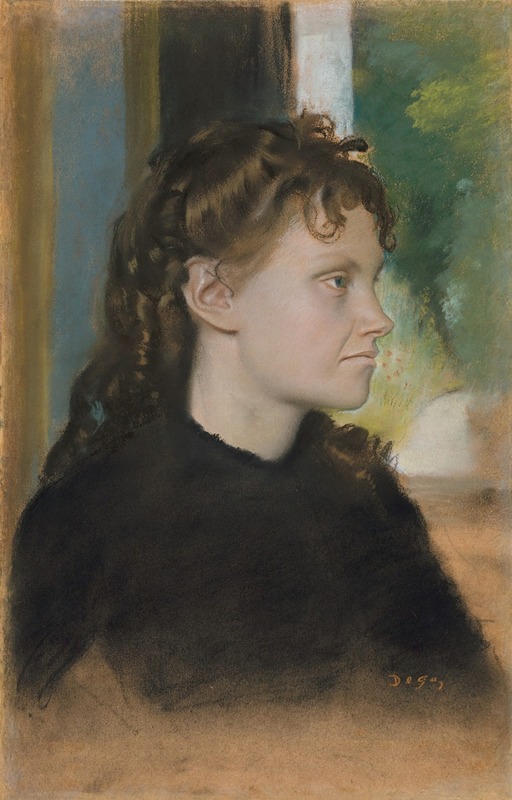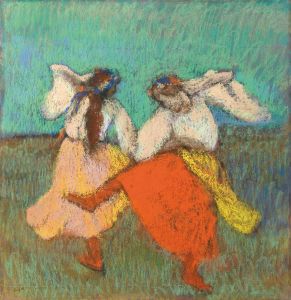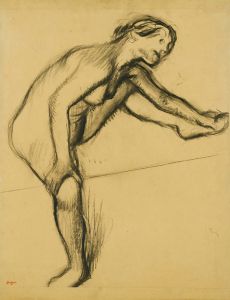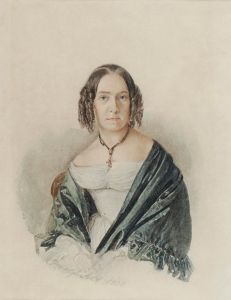
Madame Théodore Gobillard
A hand-painted replica of Edgar Degas’s masterpiece Madame Théodore Gobillard, meticulously crafted by professional artists to capture the true essence of the original. Each piece is created with museum-quality canvas and rare mineral pigments, carefully painted by experienced artists with delicate brushstrokes and rich, layered colors to perfectly recreate the texture of the original artwork. Unlike machine-printed reproductions, this hand-painted version brings the painting to life, infused with the artist’s emotions and skill in every stroke. Whether for personal collection or home decoration, it instantly elevates the artistic atmosphere of any space.
Edgar Degas, a prominent French artist known for his contributions to Impressionism, painted "Madame Théodore Gobillard" in the late 19th century. This artwork is a portrait of Marie-Clémentine Valadon, who was also known as Madame Théodore Gobillard after her marriage. Degas, renowned for his skill in capturing the subtleties of human expression and movement, brings his characteristic style to this portrait, emphasizing both the individuality and the social context of the sitter.
Marie-Clémentine Valadon, more commonly known as Suzanne Valadon, was a notable figure in the art world herself, primarily recognized for her work as a model and later as a painter. However, it is important to note that the name "Madame Théodore Gobillard" refers to another individual, specifically related to the artist Berthe Morisot. Morisot's sister, Edma Morisot, married a man named Théodore Gobillard, and it is Edma who is often associated with this title. This connection highlights the intricate web of relationships within the Impressionist circle, where artists and their subjects often shared close personal ties.
Degas's portrait of Madame Théodore Gobillard is a testament to his ability to convey the inner life of his subjects. The painting is executed with a delicate balance of light and shadow, a technique that Degas mastered and frequently employed to add depth and dimension to his works. His use of color is subtle yet effective, capturing the textures of fabric and the nuances of skin tone with precision.
The composition of the portrait is intimate, focusing closely on the sitter's face and upper body. Degas's attention to detail is evident in the rendering of Madame Gobillard's attire and the gentle expression on her face. This focus on the individual, combined with the artist's technical prowess, results in a work that is both personal and universal, inviting viewers to engage with the subject on a deeper level.
Degas was known for his reluctance to adhere strictly to the conventions of portraiture, often choosing to depict his subjects in informal poses or settings. This approach is evident in "Madame Théodore Gobillard," where the sitter is portrayed with a sense of immediacy and presence that transcends traditional portraiture. The painting reflects Degas's interest in capturing the fleeting moments of everyday life, a hallmark of the Impressionist movement.
While Degas is often associated with scenes of ballet dancers and Parisian life, his portraits reveal another facet of his artistic vision. They demonstrate his keen observational skills and his ability to convey the complexity of human emotion. "Madame Théodore Gobillard" is a prime example of this aspect of Degas's work, showcasing his talent for creating portraits that are both technically accomplished and emotionally resonant.
In summary, Edgar Degas's "Madame Théodore Gobillard" is a significant work within his oeuvre, exemplifying his mastery of portraiture and his ability to capture the essence of his subjects. Through his nuanced use of color, light, and composition, Degas creates a portrait that is both a personal tribute and a reflection of the broader social and artistic milieu of his time.


















